Discover How to Clean iPhone Speakers Yourself. Follow our comprehensive guide for step-by-step instructions and expert tips to enhance your iPhone’s sound quality.
Introduction
Your iPhone is a communication tool and an entertainment hub, delivering music, videos, and podcasts. However, with time, dust, dirt, and debris can accumulate within your iPhone’s speakers, diminishing the audio quality. To guarantee that your iPhone produces crisp and clear sound, it’s essential to understand how to clean iPhone speakers yourself. This comprehensive manual will help you through the procedure step by step, ensuring you can enjoy your favorite content to the fullest.
How to Clean iPhone Speakers Yourself
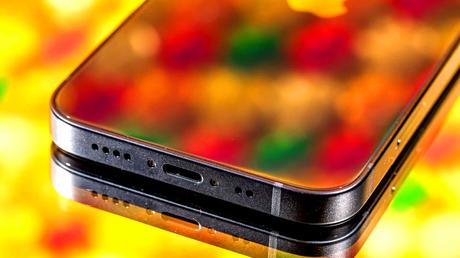
1. Gather Your Supplies
Before commencing the cleaning process, make sure you have all the necessary supplies ready:
· A soft-bristle toothbrush
· Isopropyl alcohol (preferably with a concentration of at least 90%)
· Cotton swabs
· Compressed air can
· Microfiber cloth
· A toothpick
2. Power Off Your iPhone
Safety should be your priority. Power off your iPhone before initiating the cleaning process to prevent any accidental damage.
3. Remove the Protective Case
If your iPhone has a protective case, gently remove it. Cleaning with the case on may not yield optimal results.
4. Brush Away Surface Debris
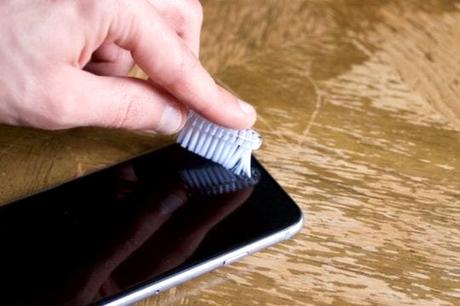
Take the soft-bristle toothbrush and, with a gentle touch, brush the speaker grilles and the surrounding areas. This step is vital to dislodge any loose dirt or dust.
5. Use Compressed Air
Hold your iPhone at a slight angle and use the compressed air can blow air into the speaker grilles. This process effectively removes finer particles that the toothbrush might have missed.
6. Alcohol Cleaning Solution
Dampen a cotton swab with isopropyl alcohol. Ensure it’s not excessively wet, just slightly damp. Carefully clean the speaker grilles and the areas around them. Isopropyl alcohol evaporates rapidly and is exceptionally effective at removing stubborn residue.
7. Detail Cleaning
For those hard-to-reach areas, such as the edges of the speaker grilles, employ a toothpick with a small piece of microfiber cloth wrapped around it. This allows for precise and meticulous cleaning.
8. Wipe Down Your iPhone
Use a microfiber towel to delicately clean your iPhone to remove any remaining alcohol or debris. Ensure your iPhone is completely dry before powering it back on.
9. Using a Soft, Lint-Free Cloth
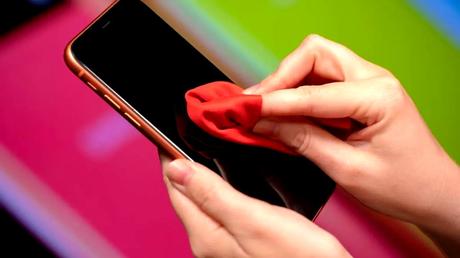
You can clean using other techniques besides those already stated your iPhone speakers using a soft, lint-free cloth. This method is particularly useful for routine maintenance. Simply dampen the cloth slightly with isopropyl alcohol and gently wipe the speaker grilles and surrounding areas. Be sure not to use excessive moisture, as you don’t want any liquid to seep into your device.
10. Ultrasonic Cleaner
For more thorough cleaning, you can consider using an ultrasonic cleaner. These machines agitate cleaning solutions with high-frequency sound waves, effectively dislodging dirt and debris from hard-to-reach areas. However, ensure you’re using a specialized electronics-friendly cleaner, and follow the manufacturer’s instructions closely.
11. Toothpick or Sim Card Ejector
Sometimes, tiny particles of debris can get stuck in the speaker grilles. You can use a toothpick or the SIM card ejector tool that comes with your iPhone to carefully dislodge these particles. Exercise extreme caution to avoid damaging the speaker components.
12. Silicone Putty
Silicone putty, often used for cleaning keyboards, can be helpful in cleaning iPhone speakers. Gently press the putty into the speaker grilles and then remove it. The putty will pick up dirt and debris as it adheres to the silicone. Be sure to use a clean piece of putty each time you clean your speakers.
13. Preventive Measures
To minimize the need for frequent cleaning, consider using a protective case with speaker grilles that are designed to keep out dust and debris. Additionally, avoid placing your iPhone in dusty or dirty environments, such as in pockets with loose change or at the beach, where sand can easily enter the speaker openings.
14. Professional Cleaning
If you’re not comfortable cleaning your iPhone speakers yourself or if you suspect a more significant issue with your device’s sound quality, it’s always a good idea to consult Apple Support or visit an authorized service center. They are equipped with the knowledge and resources necessary to identify and fix any speaker-related issues.
Keep in mind that maintaining your iPhone with frequent cleanings and maintenance is essential to Keep in mind that maintaining your iPhone with frequent cleanings and maintenance is essential delivers the best possible audio experience. By following these additional cleaning methods and tips, you can keep your iPhone speakers in top condition and enjoy the clear, high-quality sound for years to come.
When to Clean Your iPhone Speakers
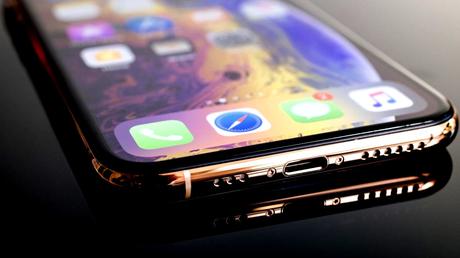
For optimum sound quality and to extend the life of your iPhone, you must regularly clean the speakers. While a regular cleaning routine is advisable, there are specific times and situations when you should prioritize cleaning your iPhone speakers:
1. Monthly Maintenance
Perform a thorough cleaning of your iPhone speakers at least once a month. This routine maintenance helps prevent the accumulation of dust, dirt, and debris that can affect sound quality.
2. After Outdoor Activities
If you’ve been outdoors in dusty or sandy environments, like the beach or a construction site, it’s a good practice to clean your iPhone speakers afterward. These environments can introduce fine particles into the speaker grilles.
3. Following Exposure to Liquids
If your iPhone comes into contact with liquids, such as water or coffee, immediately power it off and allow it to dry completely. Once dry, clean the speakers to remove any residue that may have entered the speaker openings.
4. After Using Your Phone in Dusty Areas
Using your iPhone in dusty areas, like workshops or garages, can lead to the accumulation of debris in the speakers. Consider cleaning your speakers after such use to prevent damage.
5. When Sound Quality Is Affected
If you notice a decrease in sound quality, such as muffled or distorted audio, it’s a clear sign that your iPhone speakers need cleaning. Don’t delay; clean them promptly to restore the best audio experience.
6. Before Important Calls or Meetings
If you have an important phone call or virtual meeting scheduled, take a moment to clean your iPhone speakers. Clear audio is crucial for effective communication.
7. Before Traveling
Before embarking on a trip, especially if you’re going to a location with challenging environmental conditions, thoroughly clean your iPhone speakers. This ensures you’ll enjoy quality sound during your travels.
8. When Swapping Protective Cases
If you frequently change protective cases for your iPhone, use the opportunity to clean the speakers. Dust and debris can accumulate between the case and the speakers, affecting sound quality.
These recommendations will help you keep flawless sound quality on your iPhone and ensure that your device continues to deliver an excellent audio experience. Remember that regular cleaning is a small effort that goes a long way in preserving the performance of your iPhone speakers.
Precautions When Cleaning Your iPhone Speakers
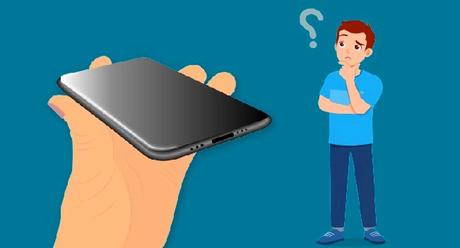
Cleaning your iPhone speakers is a straightforward process, but it’s essential to take some precautions to avoid damaging your device or compromising its performance. Here are some precautions to keep in mind:
1. Power Off Your iPhone
Before you begin cleaning, turn off your iPhone. This precaution ensures that no electrical current is running through the device while you clean the speakers, reducing the risk of any electrical mishaps.
2. Remove the Protective Case
If your iPhone is in a protective case, remove it before cleaning the speakers. Cleaning with the case on can make it challenging to access the speaker grilles and may not yield effective results.
3. Use Gentle Tools
When cleaning the speaker grilles and surrounding areas, use soft and gentle tools. A soft-bristle toothbrush, cotton swabs, and microfiber cloths are ideal choices. Avoid abrasive or sharp objects that could scratch or damage the speaker components.
4. Be Cautious with Liquids
If you’re using isopropyl alcohol for cleaning, ensure that the cotton swab or cloth is only slightly damp, not dripping wet. Excessive moisture can seep into your iPhone and cause damage. Never spray cleaning solutions directly onto your device.
5. Avoid Excessive Pressure
When brushing or using tools to clean, apply minimal pressure. The goal is to dislodge dirt and debris without pressing them further into the speaker grilles. Excessive force can damage delicate components.
6. Don’t Insert Objects Deeply
If you’re using a toothpick or a SIM card ejector tool to clean, do so with extreme care. Avoid inserting these objects too deeply into the speaker grilles, as you might damage the internal components.
7. Ensure Dryness Before Powering On
After cleaning, make sure your iPhone is completely dry before turning it back on. Moisture can interfere with the device’s operation, so exercise patience and wait for it to air dry.
8. Don’t Use Vacuum Cleaners
Avoid using vacuum cleaners, including handheld ones, to clean your iPhone speakers. The suction power of vacuums can generate static electricity, which can harm your device.
9. Test Sound Quality
After cleaning, test your iPhone’s sound quality by playing some music or making a test call. Ensure that the audio is clear and free from distortion to confirm that the cleaning was successful.
10. Consult Professionals if Needed
If you’re uncertain about cleaning your iPhone speakers or if you suspect a more significant issue with your device’s audio, it’s better to speak with Apple Support or stop by a licensed repair facility. They have the expertise to address complex problems.
By following these precautions, you can safely and effectively clean your iPhone speakers without risking damage to your device. Regular maintenance and gentle cleaning will help you enjoy optimal sound quality from your iPhone for an extended period.
Best Tools to Clean iPhone Speakers
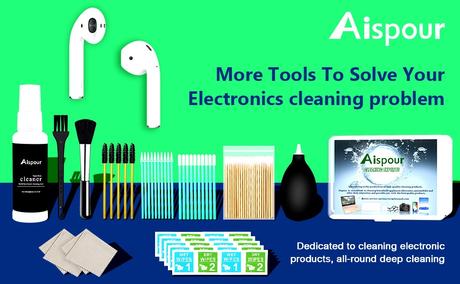
Cleaning your iPhone speakers effectively requires the right tools to ensure that you don’t damage the delicate components. Here are the best tools to clean your iPhone speakers:
1. Soft-Bristle Toothbrush
A soft-bristle toothbrush is an excellent tool for gently dislodging dust and debris from the speaker grilles. Ensure that the bristles are clean and free of toothpaste residue.
2. Cotton Swabs
Cotton swabs, often referred to as Q-tips, are perfect for more precise cleaning. Dampen the end of a cotton swab with isopropyl alcohol for thorough cleaning of the speaker grilles and surrounding areas.
3. Compressed Air Can
Compressed Air in a can does wonders blowing away fine particles and dust from your iPhone speakers. It’s especially useful for getting into tight spaces.
4. Microfiber Cloth
A microfiber cloth is essential for wiping down your iPhone after cleaning. It helps remove any remaining residue and ensures your device is dry before you power it back on.
5. Toothpick or SIM Card Ejector
These tools are handy for dislodging stubborn debris that may have become trapped in the speaker grilles. Use them with extreme caution to avoid damaging the speakers.
6. Silicone Putty
Silicone putty, such as the type used for cleaning computer keyboards, can be pressed into the speaker grilles to pick up dirt and debris. It’s reusable and effective for fine cleaning.
7. Ultrasonic Cleaner
Purchase an ultrasonic cleaner for more thorough cleaning designed for electronics. These machines stir a cleaning agent using high-frequency sound waves, effectively removing particles from your iPhone speakers.
8. Electronics-Friendly Cleaning Solution
If you’re using a cleaning solution, ensure that it’s electronics-friendly and safe for your iPhone. The substance of choice is typically isopropyl alcohol, at a percentage of at least 90%.
Remember to use these tools gently and with care to avoid damaging your iPhone’s speaker components. Following the proper cleaning techniques with these tools will help maintain your device’s sound quality and longevity.
FAQs
Q: How frequently should I clean my iPhone speakers?
A: It’s advisable to clean your iPhone speakers approximately once a month to maintain optimal sound quality.
Q: Can I substitute water for isopropyl alcohol?
A: It’s not recommended, as water can potentially harm your iPhone. Stick with isopropyl alcohol for safe and effective cleaning.
Q: What if my speakers remain muffled after cleaning?
A: If cleaning doesn’t resolve the issue, there might be a hardware problem.
For assistance, speak with Apple Support or stop by a licensed service location.
Q: How safe is it to operate a Hoover for speaker cleaning?
A: No, using a vacuum cleaner can generate static electricity and may potentially damage your iPhone.
Q: Can I clean my iPhone speakers without removing the protective case?
A: While possible, it’s best to remove the case for thorough cleaning. Dust and debris can accumulate between the case and the speakers, affecting sound quality.
Q:Is rubbing alcohol an acceptable substitute for isopropyl alcohol?
A: It’s not recommended, as rubbing alcohol may include ingredients that can damage your iPhone. Stick to isopropyl alcohol.
Conclusion
Understanding how to clean iPhone speakers yourself is valuable for maintaining your device’s longevity and audio quality. You can hear everything clearly with the correct equipment and routine maintenance from your iPhone for years. Follow the steps meticulously, exercise caution, and revel in an enhanced audio experience from your trusted iPhone.
